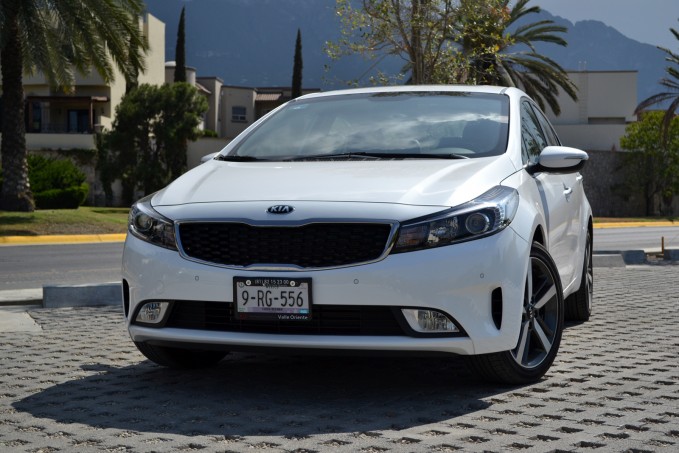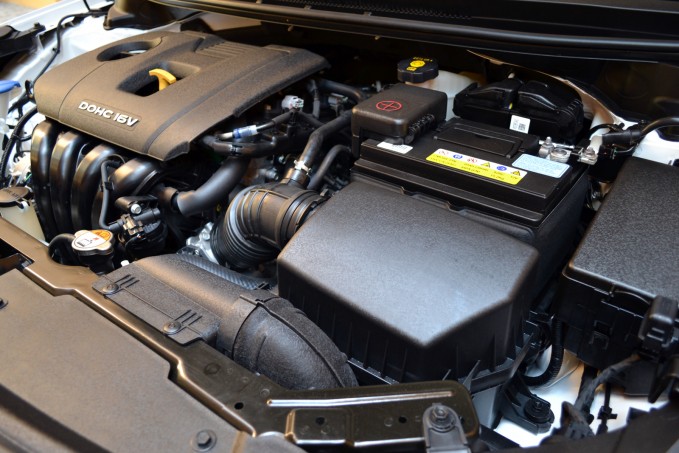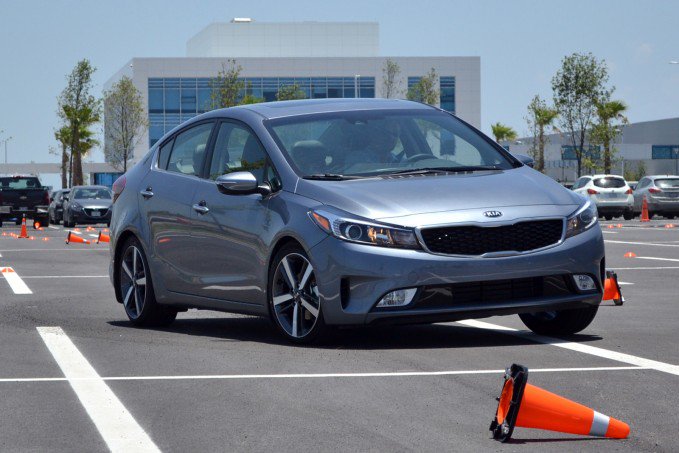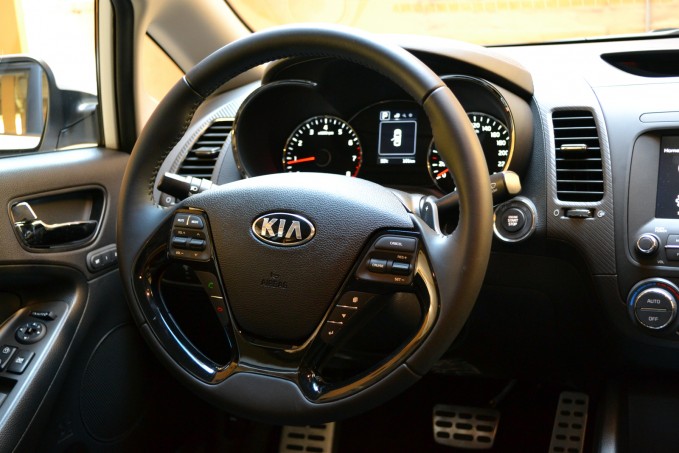Don’t look now, but Kia is on a roll.
From relative unknown to real contender, the aspirational automaker has made major strides in its short history on the North American market, but none bigger than in the last two years. Hot on the heels of becoming the first non-premium brand since 1989 to earn top honors from J.D. Power for new vehicle reliability, Kia hopes to carry that momentum into 2017, and the facelifted Forte compact figures to play a major role.
Not My Forte
Full disclosure: I own a Kia Forte; a Forte5 hatchback, to be exact.
I bought it new in 2013, the last model year of the first-generation car before Kia made the move to a more fluid design — a design I wasn’t crazy about. Buying the outgoing version also took Kia’s already impressive value proposition to new heights, with bargain basement pricing putting it in the territory of the much smaller Rio 5-door.
ALSO SEE: Next-Generation Kia Rio Spied Testing Heavily Camouflaged
The car has treated me well over the years, giving little in the way of grief aside from some bad tie rod ends that were covered under warranty. Three years later, the Forte receives a mid-cycle refresh that features a much more streamlined and handsome look. It’s also one I like a whole lot more than its predecessor’s.
Kia has wisely ditched the separate front fascias offered on the sedan and hatchback versions of the Forte, with a single wide-mouth grille offered on both body styles that ties in much more closely with the current crop of the brand’s cars. The new grille is joined by new headlights and a revised front bumper that, much like the redesigned Optima that was introduced for the 2016 model year, features air ducts at the corners to cut wind noise and improve aerodynamics, a new rear bumper and taillights, and new wheel designs across the trim range.
Paging Mr. Atkinson
The biggest change for 2017 is under the Forte’s hood, with a 2.0-liter Atkinson Cycle four-cylinder engine, the same one found in the new Hyundai Elantra, replacing a 1.8-liter unit in base cars. Output is up only slightly, to 147 hp and 132 lb-ft of torque, but the bigger story is its efficiency. Boasting a higher compression ratio and shorter compression stroke, as well as a new electric thermostat, the new engine is estimated at 29 mpg in the city — a three mpg improvement over the 1.8-liter.
ALSO SEE: 2017 Hyundai Elantra Review
The existing 2.0-liter direct-injected four-cylinder is still available, but has been detuned slightly to make 164 hp and 151 lb-ft of torque, while a revised six-speed automatic is standard on all but base cars, and shifts more smoothly than the outgoing gearbox.
The Atkinson engine is the way to go if you’re looking to save at the pumps, and is underwhelming with the throttle opened wide, falling well behind the direct-injected option in terms of performance, but don’t expect to be wowed by the GDI engine, either, even with the new drive mode selector set to sport.
Improved Ride Quality
The streets of Monterrey, Mexico, were a true test of the Forte’s refined suspension setup, which passed with flying colors. The coupled torsion-beam rear suspension, introduced on the second-gen Forte, is lightyears ahead of the old setup, which had a tendency to make the back of the car feel like it’s skipping across the pavement through bumpy corners, though it’s not as smooth as some of its multi-link-laden competitors. The Forte shouldn’t be mistaken for a sport compact, because it definitely is not, and could benefit from thicker stabilizers to reduce dive and roll when it’s pushed hard, but it is on par with most of the rest of the competition when it comes to ride comfort.
ALSO SEE: 2016 Mazda3 vs Honda Civic Comparison
Likewise, cabin quietness has been improved, and is pretty close to, if not on the level with, the upper echelon of the compact competition.
Convenience Abounds
The interior of the Forte gets slight changes for 2017, including revised HVAC controls and a streamlined center console. It’s a tidy affair throughout, is roomy and comfortable, and provides excellent visibility front and back and side to side.
ALSO SEE: Hands-on with Android Auto
The infotainment system is the third-generation of Kia’s UVO interface that runs through a seven-inch touchscreen, and gets Android Auto smartphone compatibility. It comes into play on mid-grade models and above. Apple CarPlay should be on the way shortly, and will be added through a software upgrade after the Forte hits the market. The UVO system continues to be one of the easiest to use on the market, and also benefits from a 3.5-inch supplemental screen in the center of the gauge cluster that can be used to display items like turn-by-turn directions to keep the driver’s eyes closer to the road.
Lane keep assist has also been added to top-of-the-line Fortes for 2017, and includes two functionalities — standard control and active control. Using standard control, the car will apply steering input to keep the car from crossing lane markings, while active control will keep the car centered within a given lane. That doesn’t mean the Forte is a semi-autonomous car, though, and the system will deactivate itself after about 25 seconds without driver input. Unfortunately, I was unable to test the feature during the limited wheel time I had.
Other new convenience features include a so-called “smart trunk” that will open on its own when it detects someone standing at the rear bumper for three seconds with the car’s key fob in their pocket, making it a little easier to load when both hands are occupied, and adaptive headlights on top-grade sedans that rotate 12° in either direction for better visibility through turns.
The Verdict: 2017 Kia Forte Sedan Review
The 2017 Forte is the latest in a string of new or revised products from Kia that pack a great deal of value into, well, a great deal. Starting at $16,490 — $15,495 in Canada — it’s among the cheapest new compacts out there, making it a serious contender in the commuter car market.












